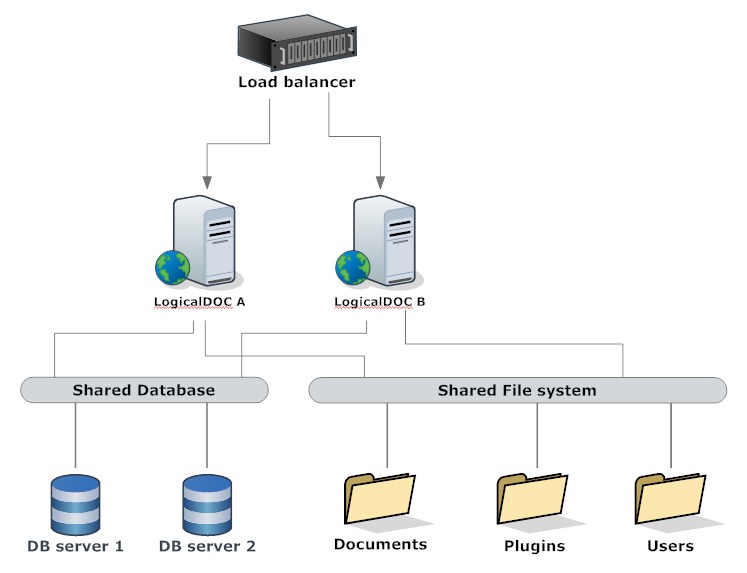Load balancing: Difference between revisions
From LogicalDOC Community Wiki
Jump to navigationJump to search
| Line 9: | Line 9: | ||
= Poposed configuration = | = Poposed configuration = | ||
Database: the database is shared among all nodes. It could be a clustered database. | *Load balancing: hardware balancer | ||
Filesystem: we will use a shared filesystem common to all nodes. We can use the multiple volumes and/or dedicated NAS. | *Database: the database is shared among all nodes. It could be a clustered database. | ||
Application Server: each node is a single LogicalDOC instance with its own full-text engine | *Filesystem: we will use a shared filesystem common to all nodes. We can use the multiple volumes and/or dedicated NAS. | ||
*Application Server: each node is a single LogicalDOC instance with its own full-text engine | |||
<br> | |||
<br> | <br> | ||
[[File:clustering1.jpg]] | [[File:clustering1.jpg]] | ||
Latest revision as of 14:59, 2 March 2012
Load Balancing with LogicalDOC
The purpose of this configuration is to maximize the performances distributing the CPU and RAM loads among a set of nodes called a cluster.
The most part of the stress in a large installation is due to the operations of parsing, indexing and search. So care must be taken in the full-text engine.
We will use the following technologies:
- JGroups to cluster LogicalDOC instances
- Solr as indexing and search engine
Poposed configuration
- Load balancing: hardware balancer
- Database: the database is shared among all nodes. It could be a clustered database.
- Filesystem: we will use a shared filesystem common to all nodes. We can use the multiple volumes and/or dedicated NAS.
- Application Server: each node is a single LogicalDOC instance with its own full-text engine
